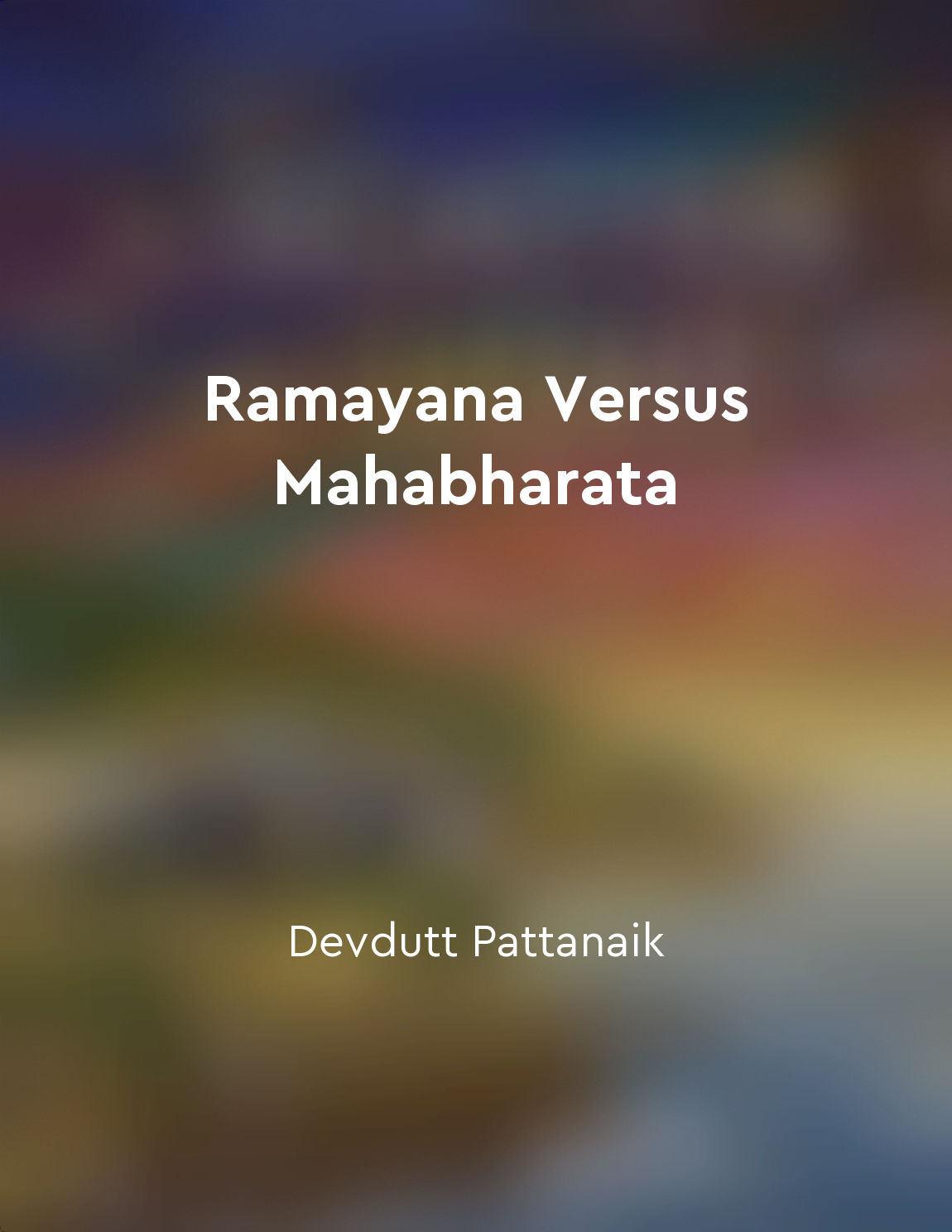Exile from "summary" of Ramayan by P. R. Mitchell
In the epic Ramayan, the concept of exile plays a significant role in shaping the narrative and character development. The protagonist, Prince Rama, is unjustly banished from his kingdom to live in the forest for fourteen years. The exile serves as a test of Rama's virtue and righteousness, as well as a means of fulfilling his destiny. During his exile, Rama demonstrates his unwavering commitment to duty and righteousness by faithfully abiding by his father's decree. Despite facing numerous challenges and obstacles in the forest, including battles with demons and temptations, Rama remains steadfast in his devotion to his principles. The exile also serves to highlight the theme of loyalty and sacrifice, as Rama's wife Sita and loyal brother Lakshmana choose to accompany him into the forest rather than abandon him in his time of need. Their unwavering support and dedication to Rama underscore the importance of family bonds and selfless devotion. Furthermore, the exile allows Rama to undergo a period of introspection and self-discovery, as he reflects on his role as a prince and future king. Through his experiences in the forest, Rama gains wisdom, humility, and empathy for the suffering of others, ultimately preparing him for his eventual return to the kingdom and his rightful place on the throne.- The concept of exile in the Ramayan serves as a transformative experience for Rama, shaping his character and destiny in profound ways. Through his trials and tribulations in the forest, Rama emerges stronger, wiser, and more compassionate, embodying the qualities of a true hero and inspiring generations to come.
Similar Posts

Ramayana's Agastya is wise, Mahabharata's Bhishma is selfless
In the Ramayana, Agastya is portrayed as a wise sage who is respected by all for his knowledge and guidance. He is seen as a me...
Monkey army
In the ancient Indian epic of the Ramayana, the concept of an army of monkeys plays a crucial role in the narrative. These monk...
Vali's betrayal of Sugriva
Vali, the mighty monkey king, had once banished his brother Sugriva from the kingdom out of fear of losing his own power. Sugri...
He finally locates Sita in Lanka
Hanuman, the mighty monkey warrior, embarked on a perilous journey to find Sita, the beloved wife of Prince Rama, who had been ...

Ramayana focuses on individual quest, Mahabharata examines collective duty
The Ramayana and Mahabharata are two ancient Indian epics that have captured the hearts and minds of people for centuries. Thes...
Lakshmana's unwavering support
In the epic tale of Ramayana, the character of Lakshmana is portrayed as a devoted and loyal brother to Lord Rama. Throughout t...
Exile
In the epic Ramayan, the concept of exile plays a significant role in shaping the narrative and character development. The prot...

Ramayana's Kaikeyi is manipulative, Mahabharata's Gandhari is sorrowful
In the epic Ramayana, the character Kaikeyi is portrayed as manipulative. She schemes to secure the throne for her son Bharata ...
Kishkindha kandam serves as a beacon of hope and virtue
The 'Kishkindha kandam' in 'The Ramayana' shines as a guiding light of optimism and moral excellence. It illuminates the path o...

